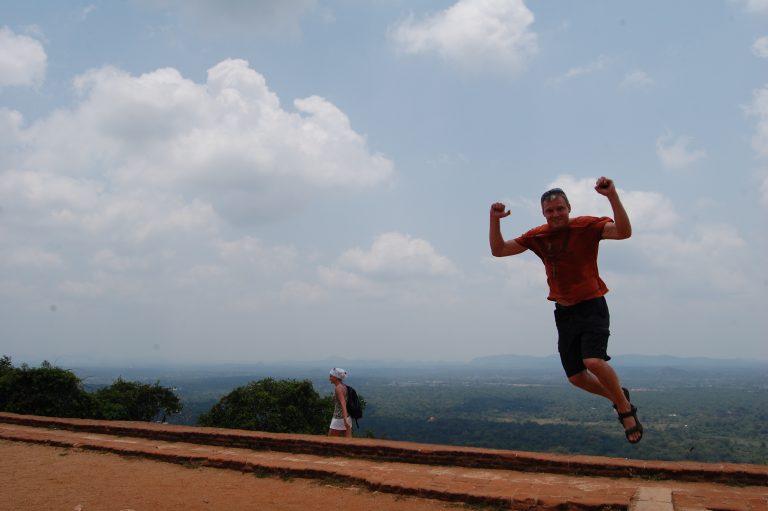After staying near Galle, Sri Lanka for a few weeks we decided to travel to Kandy and then proceed to the ancient rock of Sigiriya. Fortunately, there is a train that runs between Galle – Colombo and also Colombo-Kandy.
The train ride from Colombo to Kandy was especially scenic because it runs along the mountaintops of the Sri Lanka interior. Then, after visiting Kandy we procured a driver with the assistance of our Sigiriya hotel and set out for the day.
Sigiriya Travel Map
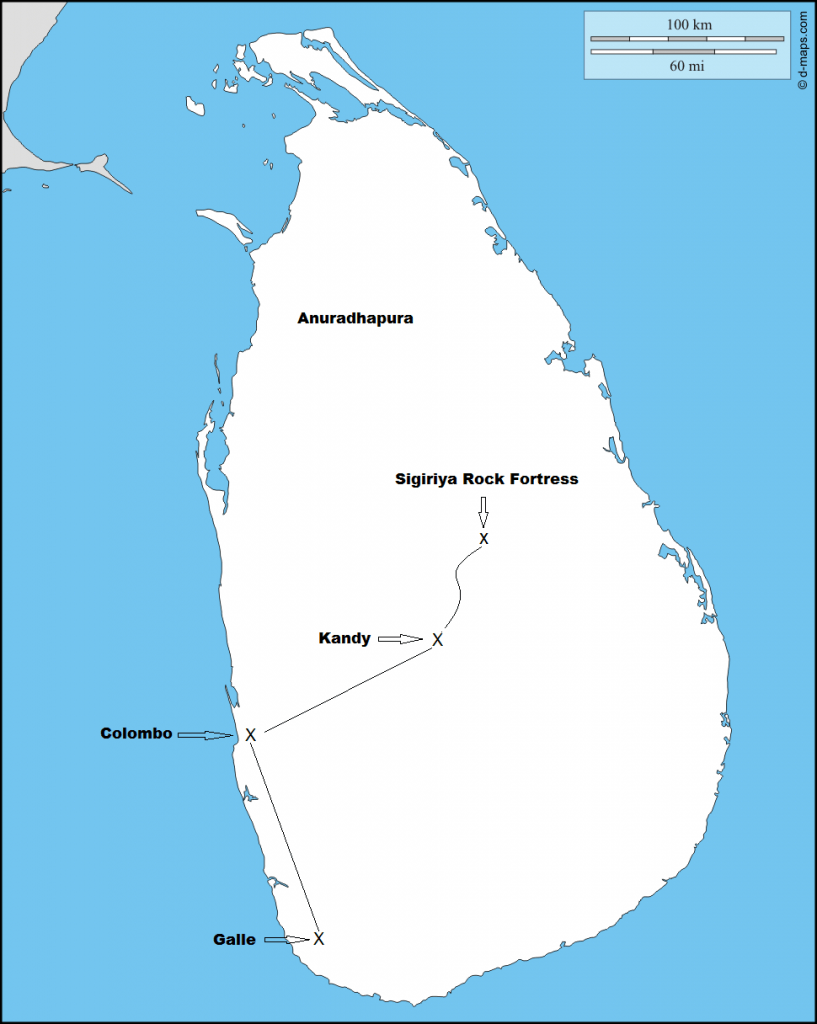
Historical Background of Sigiriya
In 477 ACE Sri Lanka was ruled by King Dhatusena. The king had two sons named Kashyapa and Mogallana. However, Kashyapa was his son by a non royal consort and was therefore not a legitimate heir to the throne. On the other hand, Mogallana was King Dhatusena’s son by the true queen and he was the legitimate heir to the throne of Sri Lanka.
Unfortunately, Kashyapa decided to take matters into his own hands. With the assistance of the army commander Kashyapa gained control. Next, he seized the throne by killing King Dhatusena. Kashyapa was a very cruel man and he effectively buried King Dhatusena alive by walling him in. As a result, Mogallana fled for his life to India and Kashyapa assumed control of Sri Lanka.
King Kashyapa Relocates Palace Throne
King Kashyapa knew that his brother would raise an army in India and return to claim the throne. Therefore, he relocated his throne from Anuradhapura to Sigiriya in north central Sri Lanka. King Kashyapa turned this remote 200 meter high rock outcropping into a palace fit for a king.
As a result, the King’s artists embellished Sigiriya Rock with royal frescoes. Additionally, manicured gardens surrounded the rock fortress for as far as the eye could see. Additionally, he fortified it with a moat and military installations to fend off the return of Mogallana.
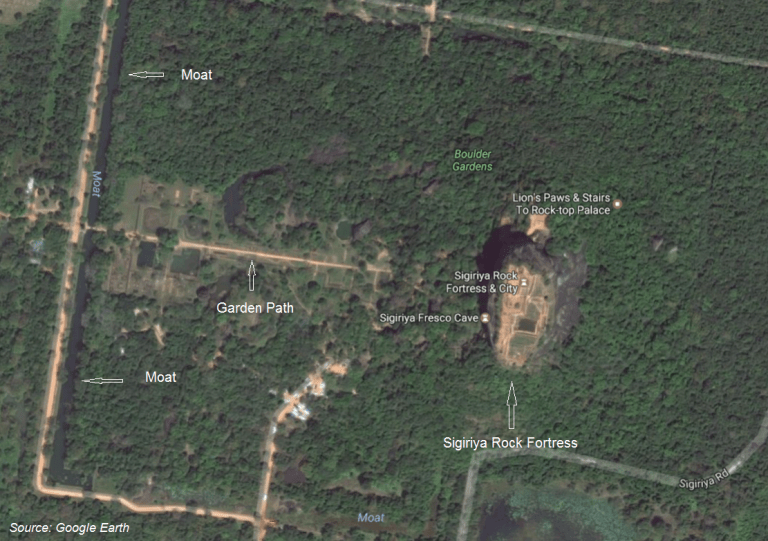
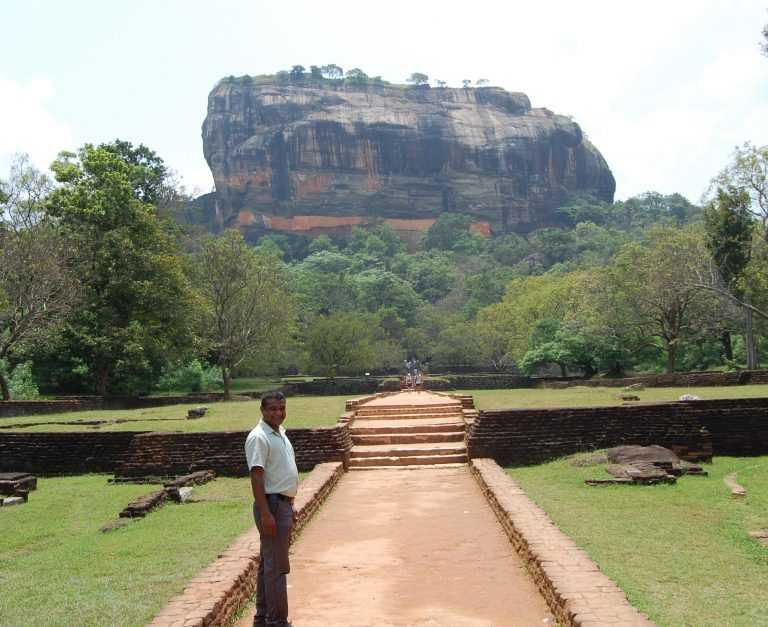
The Ignoble Demise of King Kashyapa
Indeed the worst fears of King Kashyapa would come true and eventually his brother returned with a massive army to reclaim his throne. However, King Kashyapa chose not to flee and he met his brother in battle. Unfortunately, there was a strange twist of fate that would befall King Kashyapa as they prepared to clash on the battlefield.
King Kashyapa’s battle mount was a huge Sri Lankan elephant. Unfortunately, the elephant abruptly tried to shift locations and it confused the troops who were in formation behind him. Indeed, the troops thought that King Kashyapa was trying to flee the battle! As a result, they fled and left Kashyapa to face his brother’s army alone. Kashyapa immediately fell on his own sword rather than face the wrath of Mogallana. The ignoble demise of Kashyapa would be a significant event in Sigiriya history.
Climbing to the Top
Initially, the climb starts at the junction of the moat and garden path. The well constructed path leads through the garden to the base of the rock face. However, the path continues through the cliff face and you will eventually go to the top.
The first thing that I noticed is that there was a serpent swimming in the moat! Perhaps a cobra? Therefore, invaders would have also had natural enemies to fend off if they should try to take the fortress.
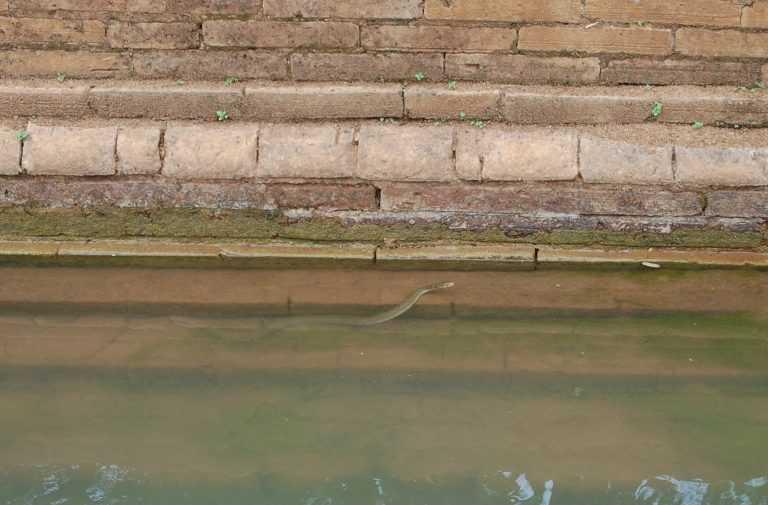
The climb was mildly strenuous but well worth it to watch the landscape below unfold in front my eyes.
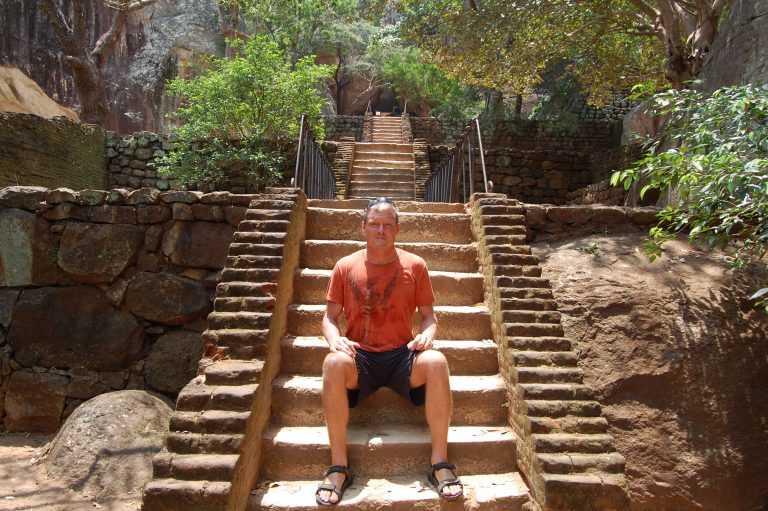
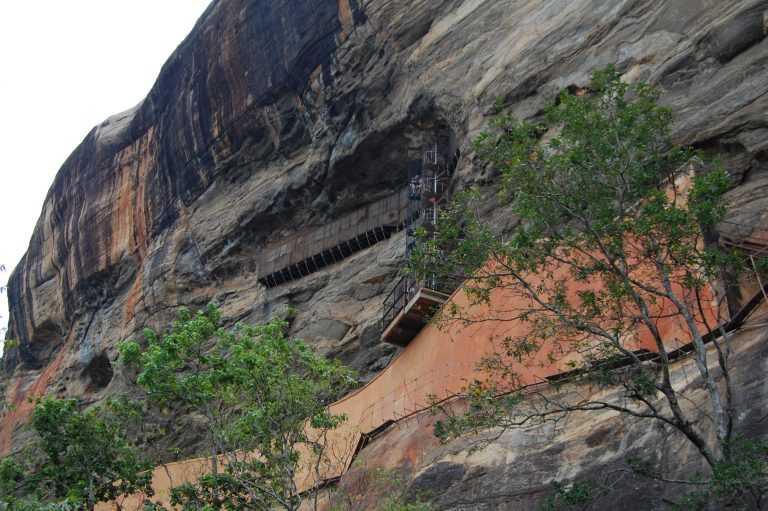

Sigiriya Frescoes and Architectural Designs
King Mogallana abandoned Sigiriya Palace shortly after after the demise of his brother. Sigiriya was then converted to a Buddhist Monastery until the 14th century. However, many of the frescoes survived to this day. As a result, tourists can view them as they are climbing to the top. Indeed, the frescoes are over 1,500 years old!
These world famous frescoes are located about halfway up the Sigiriya rock climb along the pathway. Unfortunately, there is much dispute about who the women are in the Sigiriya frescoes. However, my guide suggested that they may have been some of Kashyapa’s palace consorts.
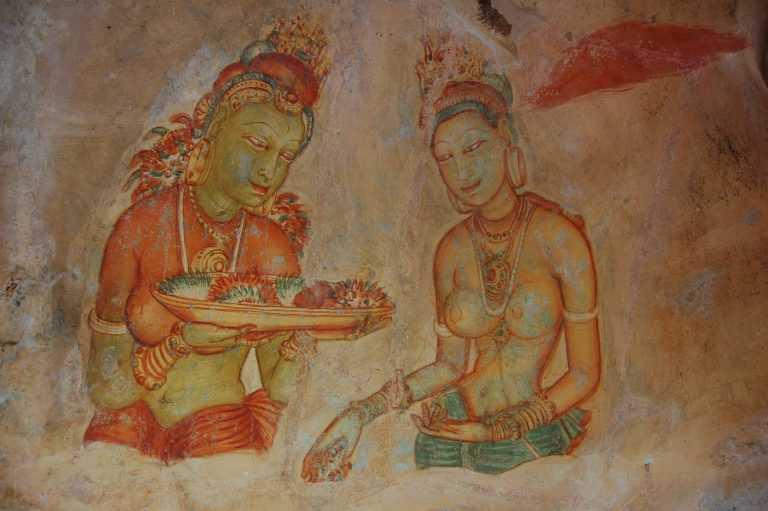
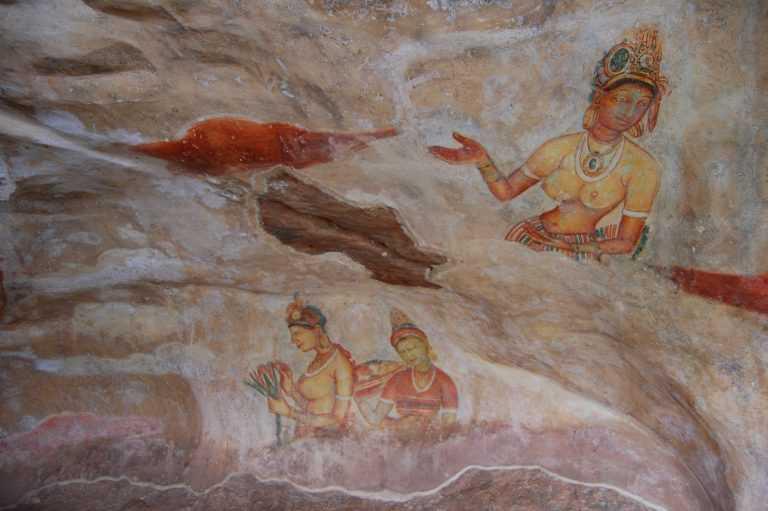
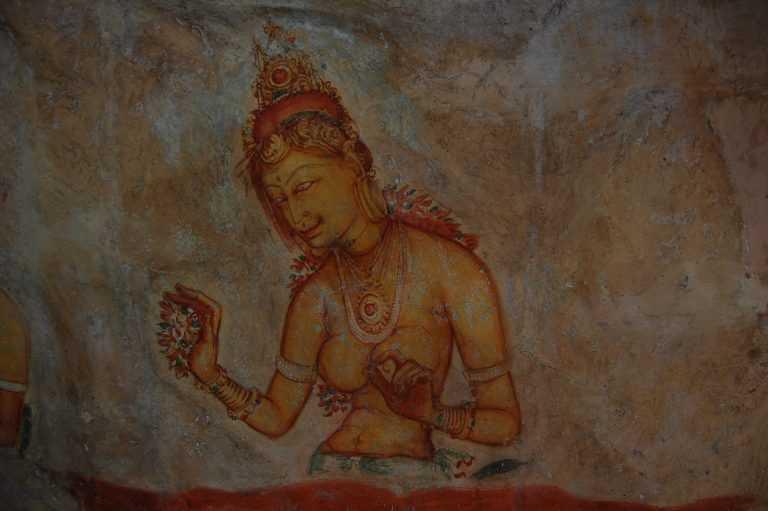
These Sigiriya frescoes seemed to be in excellent condition for being over 1500 years of age. Unfortunately, these few frescoes are all that has managed to survive antiquity. Indeed, beautiful paintings covered Sigiriya rock, however they have fallen to the hands of time. The paintings would have been a magnificent sight to see during the reign of King Kashyapa.
Furthermore, King Kashyapa could see his mirror like reflection in the rock face when he walked past. Unfortunately, the gleaming surface has long since faded. Ancient visitors to Sigiriya have left behind graffiti on the walls. I wonder what it says?
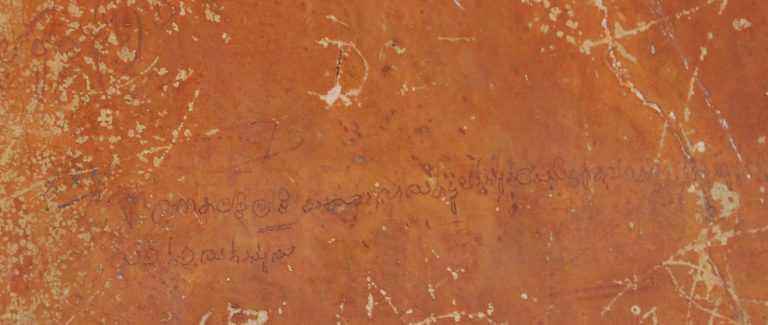
Sigiriya Lion Terrace and Beyond
About half way up there is a stone terrace that King Kashyapa constructed in the shape of a lion. Therefore, when the king and his court climbed the final distance, they would pass through the mouth of a lion before reaching the palace. Fortunately, my guide had a small illustration to depict what it would have looked like in the 5th century ACE.

The sands of time have washed away the paint and more intricate stone work. However, the paws and claws of the lion remain.
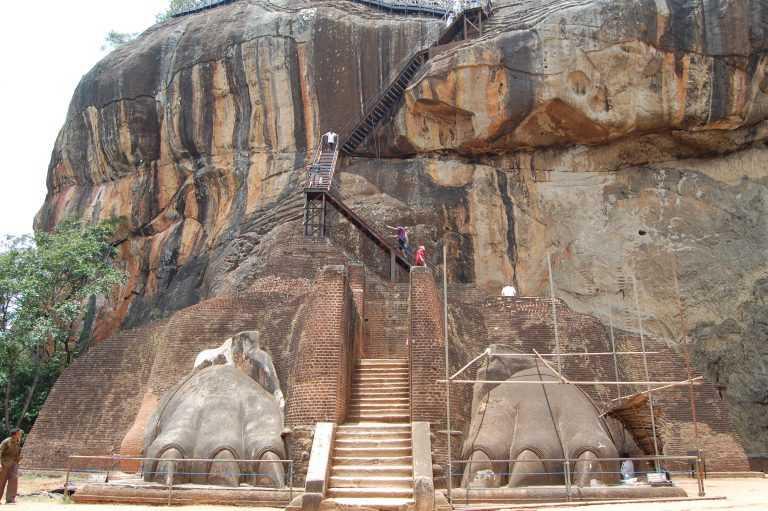
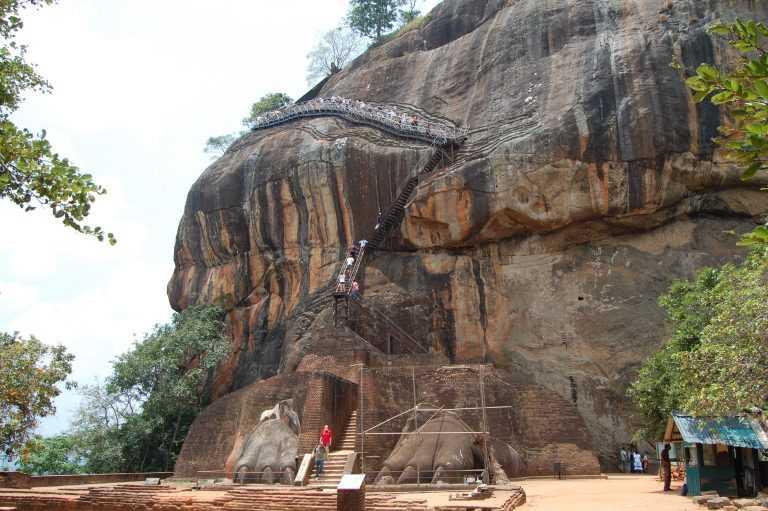
These acrobatic macaques displayed amazing dexterity as they ran back and forth across the vertical cliff face. The fatality rate of this kind of lifestyle must be pretty high!
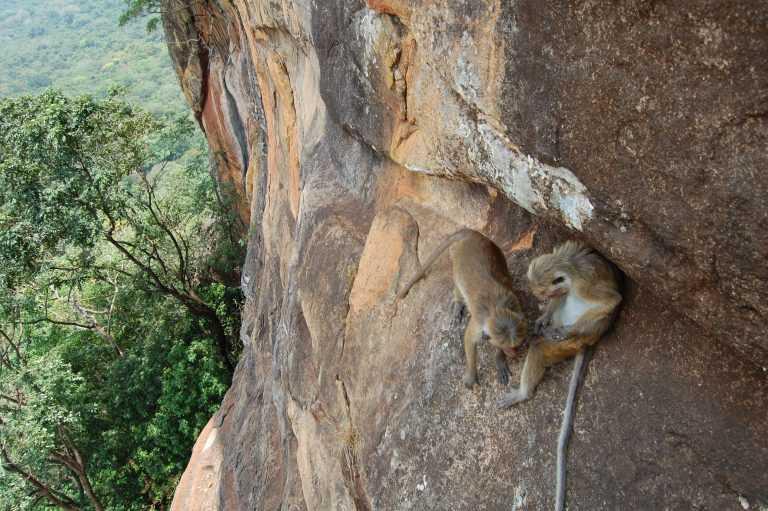
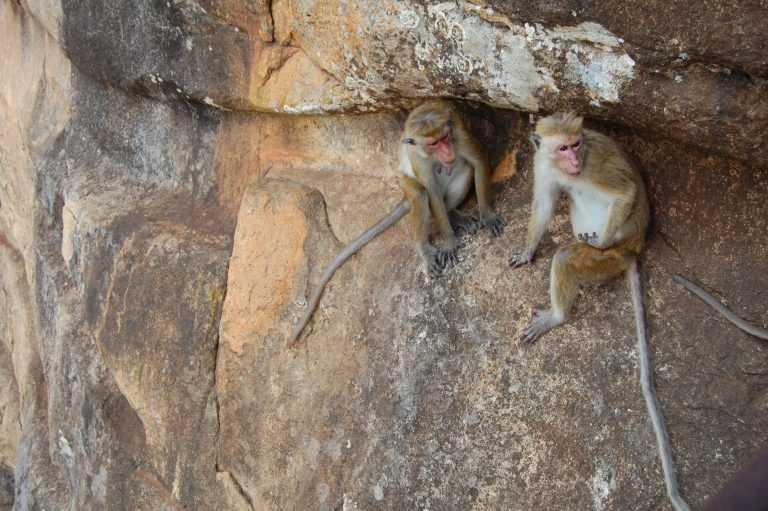
The view from the top of Sigiriya Rock Fortress is amazing. It is easy to see how it may have created the illusion of security in the mind of King Kashyapa.
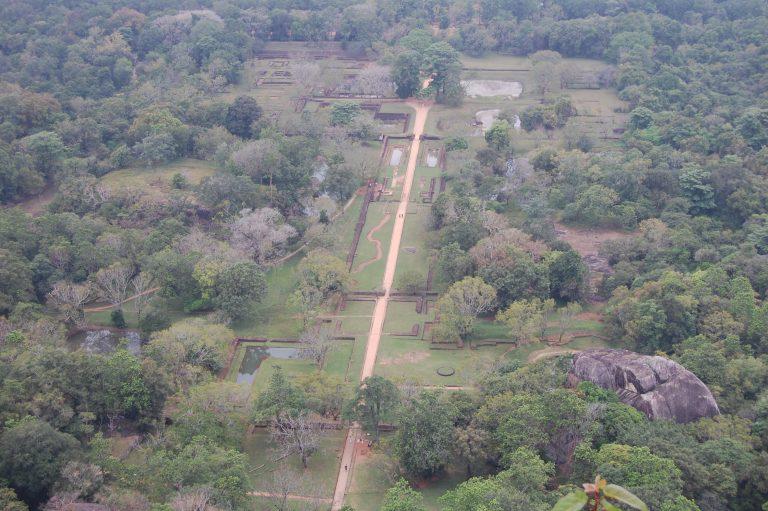
My guide led me to “the highest point on Sigiriya rock” which was in fact a small step which had led into the palace. However, the step remains and makes a good launching point for our trip back to Colombo.
